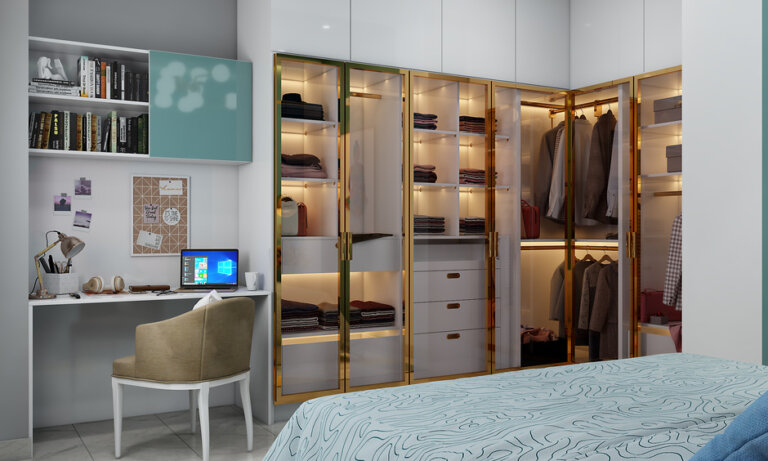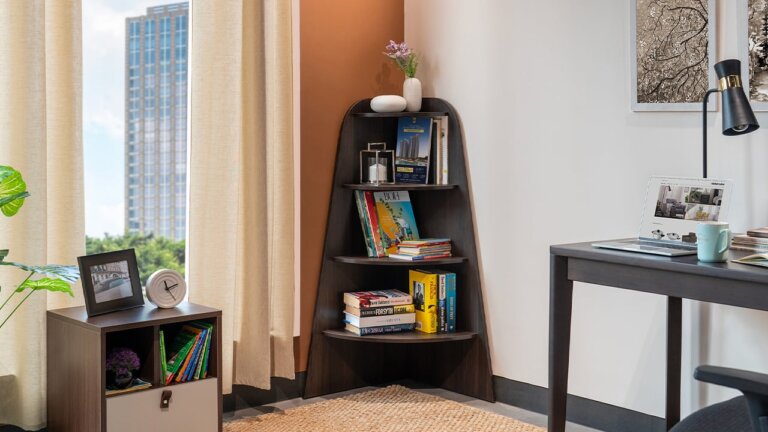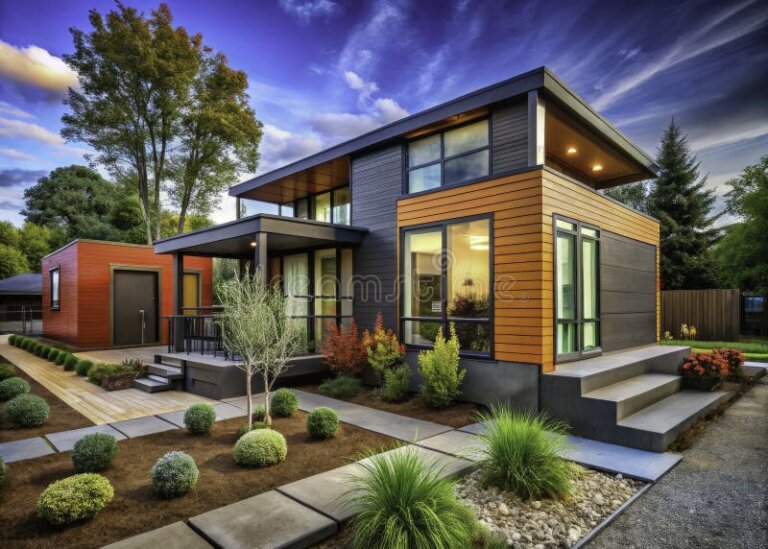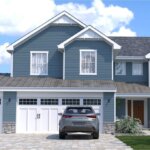Imagine living in a home that perfectly matches your style and budget. Modular homes offer this dream by combining affordability with customized design.
You might be wondering, “How much do modular homes cost? ” This question is crucial for anyone considering a new home. By understanding the costs involved, you can make informed decisions and avoid any surprises down the road. You’ll discover the key factors that influence modular home prices, including materials, size, and location.
You’ll also learn how you can save money without compromising on quality. Whether you’re a first-time buyer or looking to upgrade, knowing the cost of modular homes will empower you to take control of your housing future. Let’s dive into the details, and by the end, you’ll feel confident about making the right choice for you and your family.
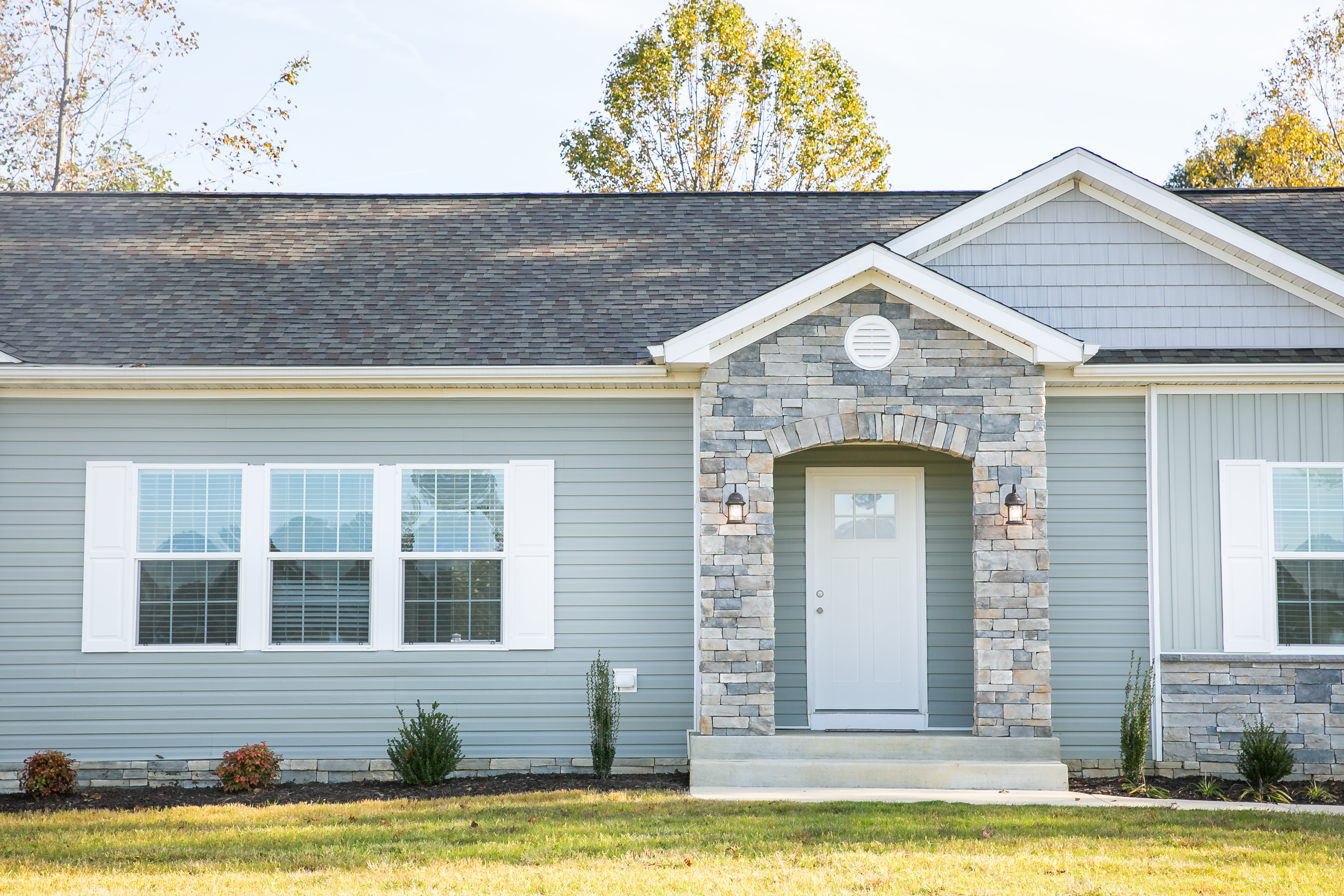
Credit: www.claytonhomes.com
Modular Homes Cost Calculator
Choose a home style to estimate your total cost.
Factors Influencing Cost
Modular homes offer a cost-effective alternative to traditional construction, yet many factors influence their final price. Understanding these elements helps in managing expectations and budgeting efficiently. Factors like design, materials, location, and customization options play a significant role in modular home pricing. Each aspect affects the overall expenses and can vary greatly based on individual choices and needs.
Design And Size
Home design factors significantly impact the cost of modular homes. The size and complexity of the design determine modular home pricing. Larger homes require more materials and labor, increasing construction costs. Design intricacies also add to the expenses.
- Home Size: Bigger homes demand more resources.
- Complex Designs: Unique architecture increases costs.
- Room Count: More rooms, higher expenses.
Here’s a simple table representing different size categories and associated costs:
| Size Category | Approximate Cost |
|---|---|
| Small (up to 1,000 sq ft) | $50,000 – $80,000 |
| Medium (1,000 – 2,000 sq ft) | $80,000 – $150,000 |
| Large (over 2,000 sq ft) | $150,000 – $250,000+ |
Materials Used
The choice of building materials influences modular home pricing. Quality and type of materials can vary, affecting overall costs. Prefab home expenses often include considerations for durability and aesthetics.
Factors affecting materials costs include:
- Building Materials Pricing: Premium materials cost more.
- Energy Efficiency: Eco-friendly options may increase initial expenses but save money long-term.
- Finishes and Fixtures: High-end finishes add to costs.
Here’s a brief overview of common materials and their impact on costs:
| Material Type | Cost Impact |
|---|---|
| Standard Wood Frame | Lower initial costs |
| Steel Frame | Higher durability, higher cost |
| Eco-Friendly Materials | Higher upfront, lower utility bills |
Location And Land
Location plays a crucial role in determining modular home costs. Regional pricing variations can affect overall expenses significantly. Land acquisition costs also contribute to the total budget.
Consider these location-related factors:
- Regional Pricing Variations: Prices differ by area.
- Land Acquisition Costs: Prime locations cost more.
- Installation Costs: Difficult terrains increase expenses.
Understanding location impacts can help in making informed decisions. Here’s a simple breakdown:
| Location Factor | Cost Consideration |
|---|---|
| Urban Areas | Higher land costs |
| Rural Areas | Lower land costs |
| Difficult Terrain | Higher installation costs |
Customization Options
Customization options allow homeowners to tailor their modular homes. Modular home features can be modified to suit personal preferences, affecting costs. Customization expenses should be considered in budgeting.
Common customization choices include:
- Interior Layout: Personalized room arrangements.
- Exterior Design: Unique facades increase costs.
- Smart Home Features: Technology integration raises expenses.
Here’s a brief overview of customization impacts:
| Customization Type | Cost Impact |
|---|---|
| Basic Layout Changes | Minimal extra cost |
| Advanced Technological Features | Significant additional cost |
| Unique Exterior Design | Higher aesthetic expenses |
Comparing Modular And Traditional Homes
Modular homes offer a unique and cost-effective alternative to traditional homes. The cost of prefabricated houses often varies, but they generally promise savings in several areas, including time and labor. Understanding the differences between modular and traditional homes can help you make an informed decision. This section delves into three crucial aspects of this comparison: construction time, labor costs, and financing options.
Construction Time
One of the most significant advantages of modular homes is the reduced construction time. The modular home construction timeline is often shorter than traditional building methods. Here are some key points:
- Modular homes are built in factories, which means they are not subject to weather delays.
- Construction in a controlled environment ensures efficiency and quality control.
- Once the modules are built, they are transported to the site and assembled quickly.
This efficient process means that building a modular home can take as little as a few weeks, compared to several months for traditional homes. This rapid construction not only saves time but also can significantly affect your overall construction budget.
Here’s a simple comparison:
| Type | Average Time |
|---|---|
| Modular Homes | 2-3 months |
| Traditional Homes | 6-12 months |
Labor Costs
Labor expenses for modular homes can be lower compared to traditional homes. Here’s why:
- Factory-built homes require fewer on-site workers.
- Assembly line production reduces labor hours.
- Less specialized labor is needed on the construction site.
Due to these factors, installation costs can be more predictable and often lower. Traditional homes, on the other hand, may encounter unexpected labor expenses due to weather or other delays.
Consider the following breakdown:
| Type | Estimated Labor Costs |
|---|---|
| Modular Homes | $15,000 – $30,000 |
| Traditional Homes | $30,000 – $50,000 |
Financing Options
Financing modular homes can differ from traditional homes, but there are flexible options available. Modular housing financing options include:
- Construction loans specifically for modular homes.
- Mortgages once the home is complete and on-site.
- Personal loans or lines of credit for smaller projects.
Financing modular homes might require different documentation, as lenders need to understand the modular home pricing and its unique aspects. Prefab home expenses, being typically lower, can result in smaller loan amounts.
Ensure you:
- Discuss with lenders experienced in modular home financing.
- Understand all terms and conditions before signing any agreements.
Choosing the right financing can significantly impact your overall cost and affordability.
Average Pricing Breakdown
Modular homes have become a popular choice for many due to their affordability and flexibility. Understanding the average pricing breakdown of these homes can help buyers make informed decisions. The cost of modular homes varies based on several factors, such as the model chosen and additional expenses. This guide will explore the costs associated with basic and high-end models, as well as other expenses that may arise.
Basic Models
Basic models of modular homes are often the most budget-friendly option. These models provide essential features without many frills. The modular home pricing for basic models can range significantly based on size and location.
- Construction Costs: Typically between $50 to $100 per square foot.
- Energy Efficiency: Often includes standard insulation and basic energy-saving features.
- Home Customization Options: Limited options, focusing on functionality over aesthetics.
Here’s a simple breakdown of costs for basic models:
| Feature | Average Cost |
|---|---|
| Construction Costs | $50,000 – $100,000 |
| Site Preparation Costs | $10,000 – $20,000 |
| Delivery Fees | $3,000 – $5,000 |
These basic models are ideal for those seeking affordability and simplicity. They’re a great starting point in the prefab homes market.
High-end Models
High-end models offer luxury and high-quality features. They are often chosen by those seeking comfort and style. The modular home pricing for these models reflects their premium nature.
- Construction Costs: Generally range from $100 to $200 per square foot.
- Real Estate Value: Higher resale value due to quality materials and finishes.
- Home Customization Options: Extensive options available, including smart home features and custom designs.
A typical cost breakdown for high-end models includes:
| Feature | Average Cost |
|---|---|
| Construction Costs | $150,000 – $300,000 |
| Site Preparation Costs | $15,000 – $25,000 |
| Delivery Fees | $5,000 – $8,000 |
High-end models elevate living standards with their advanced features. They’re perfect for those who appreciate luxury and are willing to invest in it.
Additional Expenses
Beyond the initial modular home pricing, several additional expenses should be considered. These expenses can impact the overall cost and are vital to budget for.
- Building Permits: Necessary for legal compliance, typically costing between $500 and $2,000.
- Modular Home Financing: Interest rates and loan terms may affect the total expenditure.
- Prefab Homes Expenses: Includes landscaping, utilities setup, and interior design.
Here’s a list of potential additional expenses:
- Landscaping: $5,000 – $10,000
- Utilities Setup: $2,000 – $5,000
- Interior Design: $3,000 – $7,000
Understanding these additional expenses helps in creating a comprehensive budget. It ensures that there are no surprises during the home-building process.
Cost-saving Tips
Building a modular home can be an affordable option, but costs can add up. Knowing some cost-saving tips can make a big difference. These tips help manage expenses without sacrificing quality. From builder selection to design choices, each step matters. Timing your purchase is also crucial. Let’s explore some practical strategies to save money when building a modular home.
Choosing The Right Builder
Selecting the right builder impacts the overall cost of your modular home. Builder Selection Tips are crucial. A good builder offers cost-effective building solutions. They help manage costs and ensure quality.
Consider these factors when choosing a builder:
- Experience with factory-built homes
- Transparent modular home pricing
- Strong reputation and customer reviews
It’s beneficial to compare quotes from multiple builders. This ensures competitive pricing. A table can help organize this information:
| Builder | Experience (Years) | Price Estimate |
|---|---|---|
| Builder A | 10 | $150,000 |
| Builder B | 5 | $140,000 |
| Builder C | 8 | $145,000 |
Remember, the cheapest option is not always the best. Balance cost with quality and reliability. This ensures long-term satisfaction and savings.
Simplifying Design Choices
Design Customization can impact your budget significantly. Opting for simple designs can reduce construction expenses. Focus on essential features that meet your needs.
Consider these tips to simplify design choices:
- Choose standard layouts over custom ones.
- Use cost-effective materials without compromising quality.
- Limit luxury features.
Simple designs not only save money but also speed up the building process. This efficiency is one of the modular construction benefits. It’s possible to create a beautiful home with a modest budget.
Discuss your budget with your builder. They can suggest affordable design options. This collaboration ensures your home is both stylish and budget-friendly.
Timing Your Purchase
The timing of your purchase affects prefab home costs. Purchase Timing Strategies can lead to substantial savings. Consider seasonal demand fluctuations. Prices can vary based on demand and supply.
Here are some tips for timing your purchase:
- Consider buying during off-peak seasons.
- Watch for builder promotions and discounts.
- Plan ahead to avoid rushed decisions.
Understanding the market can lead to better deals. Modular home financing can also affect timing. Secure financing before making a purchase. This ensures you are ready to act when prices are favorable.
Proper timing and planning can make a huge difference in your overall costs. Be strategic and informed to maximize savings.
Long-term Financial Considerations
Modular homes are known for their affordability and flexibility. When thinking about the costs of these homes, it’s crucial to consider long-term financial aspects. Beyond the initial investment, understanding the financial implications over time can make modular homes a smart choice. Long-term financial considerations include factors like resale value, maintenance costs, and energy efficiency savings. Each of these elements plays a vital role in determining the overall cost-effectiveness of modular homes.
Resale Value
The resale market for modular homes is gaining traction. Many potential buyers are interested in the modern designs and cost-effective solutions they offer. This interest can positively impact the home value retention of modular homes.
Here are some factors that influence resale value:
- Location: Homes in desirable areas tend to have higher resale values.
- Quality of Construction: High-quality, sustainable building costs can enhance value.
- Upgrades and Features: Modern amenities increase appeal and value.
Comparing modular homes to traditional homes, a table can illustrate potential resale values:
| Home Type | Resale Value Range |
|---|---|
| Modular Home | $150,000 – $300,000 |
| Traditional Home | $200,000 – $400,000 |
While traditional homes might have a higher range, the gap is closing as the resale market for modular homes grows. Financing modular houses is also becoming easier, increasing their appeal.
Maintenance Costs
Maintenance costs can significantly impact the overall expense of home ownership. Upkeep costs for modular houses are often lower compared to traditional homes. This is due to their efficient construction and use of durable materials.
Key aspects of modular home maintenance include:
- Material Quality: Prefabricated homes price often includes high-quality materials that require less frequent repairs.
- Design Efficiency: Modular construction expenses include efficient designs that reduce wear and tear.
- Ease of Repair: Modular designs allow for easier access to utilities, reducing labor costs.
A typical comparison of yearly maintenance costs:
| Home Type | Annual Maintenance Cost |
|---|---|
| Modular Home | $500 – $1,000 |
| Traditional Home | $1,000 – $2,500 |
These lower maintenance costs make modular homes a cost-effective home solution for many families.
Energy Efficiency Savings
Modular homes are designed with energy efficiency in mind, offering significant savings over time. Energy savings in modular designs come from advanced insulation and sustainable building techniques.
Consider these energy-efficient features:
- Insulation: High-quality insulation reduces heating and cooling costs.
- Windows: Energy-efficient windows minimize heat loss.
- Appliances: Use of energy-star-rated appliances lowers electricity usage.
The impact of these features can be substantial. For example, a modular home might save homeowners 20% on utility bills compared to older, traditional homes.
Here’s a simple breakdown of potential savings:
| Feature | Potential Annual Savings |
|---|---|
| Insulation | $200 – $400 |
| Windows | $150 – $300 |
| Appliances | $100 – $250 |
These savings make modular homes an attractive option for those looking for long-term investment in modular homes.

Credit: www.fixr.com
Financing Modular Homes
Financing modular homes can be a complex but rewarding journey. As more people turn to Affordable Modular Housing due to its efficiency and cost-effectiveness, understanding the financial aspects becomes crucial. Modular Home Prices are generally lower than traditional homes, making them appealing to many. Yet, navigating the world of Modular Home Financing Options requires a clear understanding of loan types, down payments, and available government programs. With the right knowledge, purchasing a modular home becomes a feasible and stress-free experience.
Loan Types Available
Various loan types cater to those interested in Modular Home Loans. These loans help ease the burden of Prefabricated House Costs and make the dream of owning a modular home a reality. Here are some common loan types:
- FHA Loans For Modular Homes: These loans are popular due to their flexibility and low down payment requirements.
- Conventional Loans: Typically offer competitive interest rates, suitable for those with a good credit score.
- VA Loans: Available for veterans, offering benefits like no down payment and lower interest rates.
Understanding the specifics of each loan type is essential. Here’s a brief comparison:
| Loan Type | Down Payment | Interest Rates |
|---|---|---|
| FHA Loans | 3.5% | Variable |
| Conventional Loans | 5-20% | Competitive |
| VA Loans | 0% | Lower |
Down Payment Options
Down Payment Assistance can significantly impact the Cost Of Modular Construction. Various Modular Home Financing Options provide flexibility in this regard. Here’s what you need to know:
Saving Strategies: Begin by setting aside a specific amount monthly. Even small contributions add up over time. Consider opening a dedicated savings account for this purpose.
Down Payment Assistance Programs: Many lenders offer programs that help with initial payments. These can be especially helpful for first-time homebuyers.
- Check eligibility criteria for these programs.
- Explore local and state-specific assistance options.
Understanding your financial position and exploring these options can make Modular Home Prices more manageable.
Government Programs
Government Housing Programs provide substantial support in Financing Modular Homes. These programs aim to make Affordable Modular Housing accessible to a broader audience. Here are some notable programs:
- HUD Programs: Offer financial aid for low-income families seeking modular homes.
- USDA Loans: Target rural areas, providing low-interest loans with no down payment.
- Energy Efficiency Grants: Encourage sustainable building practices by offering grants for energy-efficient modular homes.
Understanding these programs can reduce Prefabricated House Costs. They offer a pathway to owning a modular home without the financial strain. Each program has its criteria, so researching eligibility requirements is key.
Insurance And Warranties
Modular homes are an appealing choice for many homeowners. They offer flexibility, speed, and cost-effectiveness compared to traditional homes. Yet, understanding the insurance and warranties is crucial. These aspects impact the total cost of ownership and provide peace of mind. Insurance and warranties safeguard your investment and ensure long-term satisfaction. Let’s delve into the specifics of insurance types, warranty coverage, and the cost implications for modular homes.
Types Of Insurance
Insurance for modular homes is essential to protect against unforeseen events. Various options are available, each catering to different needs. Understanding these ensures that you choose the right coverage.
- Prefab House Insurance Options: These options are tailored for homes constructed off-site. They cover risks specific to prefab homes.
- Construction Costs Coverage: Protects against damages during the building phase. Essential for safeguarding initial investments.
- Insurance For Modular Homes: Covers standard risks like fire, theft, and natural disasters. Provides comprehensive protection post-construction.
Consider these options carefully. Each impacts the modular home pricing and budget for modular homes. Comparing plans helps find the best fit for your needs.
Warranty Coverage
Warranty coverage for modular homes varies widely. It’s essential to understand what each warranty offers to ensure your prefab home expenses are well-justified.
| Warranty Type | Coverage Details |
|---|---|
| Structural Warranty | Covers defects in the building structure. Typically lasts for ten years. |
| Manufacturer’s Warranty | Protects against defects in materials and workmanship. Usually valid for one year. |
| Appliance Warranty | Includes coverage for built-in appliances. Often matches standard appliance warranties. |
Warranty for prefab houses ensures long-term protection. Reading the fine print helps avoid unexpected prefab home expenses.
Cost Implications
Insurance and warranties have significant cost implications on modular home financing. They affect the overall budget and total cost of ownership.
- Initial Costs: Insurance premiums and warranty fees add to initial modular home pricing.
- Long-term Savings: Adequate coverage can save money by preventing large out-of-pocket expenses.
- Budget For Modular Homes: Planning for these costs helps avoid financial strain. It ensures a smooth modular home financing process.
Understanding these aspects helps manage the cost of modular construction. It ensures your investment is protected and aligns with your financial goals.

Credit: homeguide.com
Frequently Asked Questions
Is It Cheaper To Build Or Buy Modular?
Building modular homes is often cheaper than buying pre-built ones. Construction costs are typically lower, and you save on labor. Modular homes also offer customization options, allowing you to control expenses. Always compare total costs, including land and permits, to ensure the best financial decision.
How Much Do Most Modular Homes Cost?
Modular homes typically cost between $100,000 and $300,000, depending on size, features, and location. Prices vary with customization and local construction costs. Modular homes offer affordability and flexibility compared to traditional homes, making them a popular choice for many buyers seeking cost-effective housing solutions.
How Much Does A Modular Home Cost In South Dakota?
A modular home in South Dakota typically costs between $50,000 and $200,000. Prices vary based on size, design, and customization. On average, expect to pay around $100 to $150 per square foot. It’s essential to consider land, utilities, and additional fees for a complete cost estimate.
How Much Does A Modular Home Cost In Idaho?
Modular homes in Idaho typically cost between $100 to $150 per square foot. Prices vary based on design and location. Additional costs may include land, utilities, and permits. Customizations can also affect the overall price. It’s advisable to get quotes from multiple builders to find the best deal.
Conclusion
Modular homes offer great value with flexible costs. They fit various budgets and needs. Building is often quicker, saving time and money. Quality materials provide durability and comfort. Plus, customization options cater to personal tastes. These homes are eco-friendly, reducing energy bills.
Choosing modular homes can be a smart financial decision. Consider factors like location, design, and additional features. Research and compare costs before deciding. Modular homes provide a practical solution for many families. They blend affordability, efficiency, and style. Explore this housing option if you seek value and flexibility.

My name is Mahi Uddin, and I’m a blog writer with over two years of experience specializing in creating engaging, informative content using AI tools. I contribute to InExDecor.com, where I share creative ideas and practical tips for transforming interior and exterior spaces into beautiful, functional environments. With a passion for storytelling and a knack for blending creativity with technology, I strive to craft blogs that not only inform but also inspire readers. When I’m not writing, you can find me exploring design trends or enjoying a good book with a cup of coffee.


